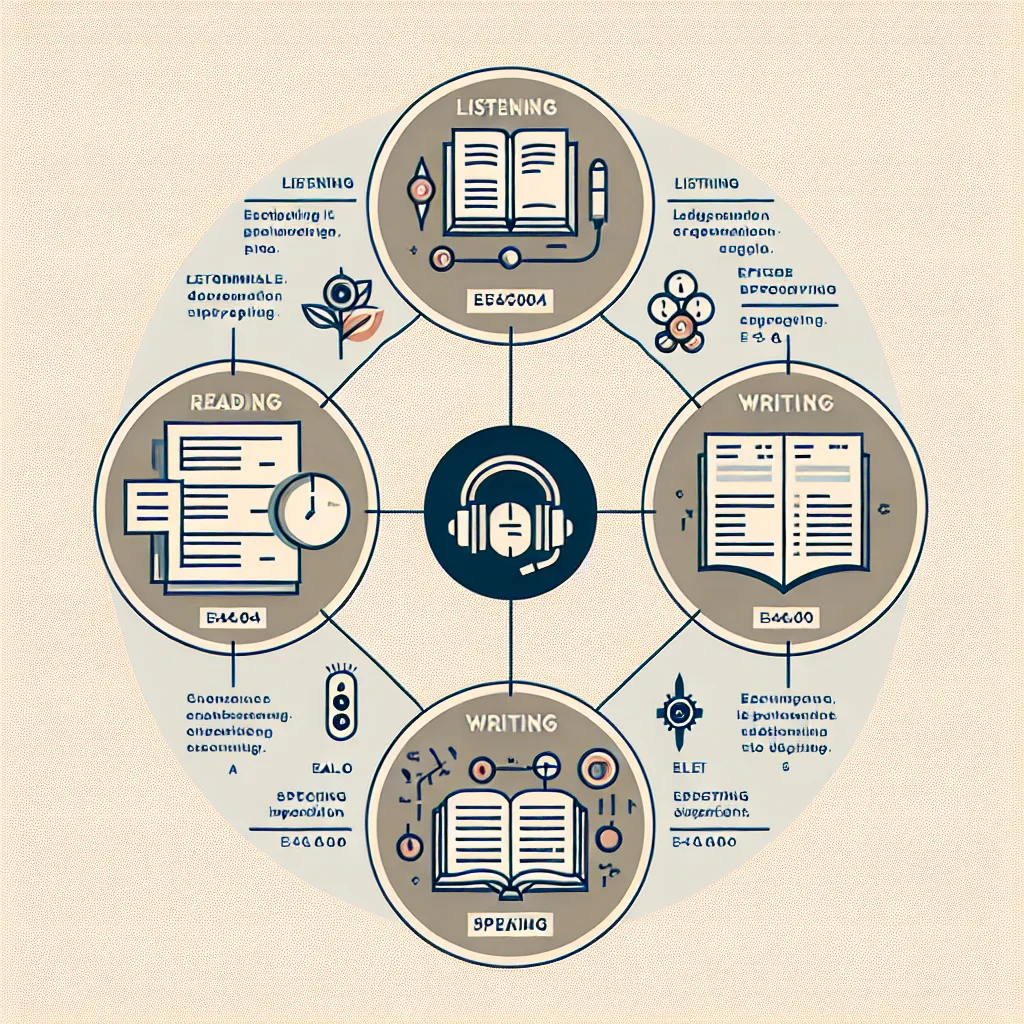The International English Language Testing System (IELTS) is a globally recognized English proficiency test. Whether you’re planning to study abroad, immigrate, or enhance your career prospects, understanding the structure of the IELTS exam is crucial for your preparation. In this comprehensive guide, we’ll explore the different sections of the IELTS exam, providing you with valuable insights to boost your confidence and performance.
Overview of IELTS Exam Structure
The IELTS exam consists of four main sections, each designed to assess a different aspect of your English language skills. These sections are:
- Listening
- Reading
- Writing
- Speaking
Let’s delve into each section to understand their format, duration, and what they aim to evaluate.

Listening Section
Format and Duration
The Listening section is the same for both IELTS Academic and General Training tests. It lasts approximately 30 minutes, with an additional 10 minutes for transferring answers to the answer sheet.
What to Expect
- You’ll listen to four recordings of native English speakers.
- The recordings include both monologues and conversations.
- Topics range from everyday situations to academic contexts.
- You’ll answer a total of 40 questions based on these recordings.
Tips for Success
- Practice active listening with various English accents.
- Familiarize yourself with different question types (multiple choice, matching, etc.).
- Read questions beforehand to know what information to listen for.
Reading Section
Format and Duration
The Reading section differs slightly between Academic and General Training tests. Both versions last 60 minutes and contain 40 questions, but the texts and question types vary.
Academic vs. General Training
- Academic: Three long texts from books, journals, and newspapers.
- General Training: Extracts from books, magazines, newspapers, and workplace documents.
Strategies for Improvement
- Enhance your skimming and scanning skills.
- Practice reading a variety of texts to improve comprehension speed.
- Learn to identify main ideas and supporting details quickly.
Writing Section
Format and Duration
The Writing section also has different tasks for Academic and General Training tests. Both versions last 60 minutes but have distinct requirements.
Task Breakdown
-
Academic:
- Task 1: Describe visual information (graph, table, chart, or diagram) in 150 words.
- Task 2: Write an essay responding to an argument or problem in 250 words.
-
General Training:
- Task 1: Write a letter in response to a given situation (150 words).
- Task 2: Write an essay responding to a point of view, argument, or problem (250 words).
Writing Tips
- Practice time management to allocate appropriate time for each task.
- Learn to analyze prompts effectively to address all parts of the question.
- Develop a clear structure for your essays with introduction, body paragraphs, and conclusion.
Speaking Section
Format and Duration
The Speaking section is the same for both Academic and General Training tests. It takes 11-14 minutes and is conducted face-to-face with an examiner.
Three-Part Structure
- Introduction and Interview (4-5 minutes): General questions about yourself and familiar topics.
- Individual Long Turn (3-4 minutes): Speak on a given topic for 1-2 minutes after brief preparation.
- Two-Way Discussion (4-5 minutes): Further questions related to the topic in Part 2.
Speaking Enhancement Techniques
- Practice speaking English regularly, focusing on fluency and pronunciation.
- Develop strategies to extend your answers with examples and explanations.
- Work on maintaining eye contact and using appropriate body language during the interview.
Key Differences: Academic vs. General Training
While the Listening and Speaking sections are identical for both versions, the Reading and Writing sections differ:
- Reading: Academic texts are more challenging and analytical, while General Training texts are more practical.
- Writing: Academic tasks focus on academic writing skills, while General Training emphasizes practical writing scenarios.
Preparing for Each Section
Effective Study Strategies
- Use official IELTS practice materials to familiarize yourself with the exam format.
- Take timed practice tests to improve your pacing and endurance.
- Focus on your weakest areas while maintaining skills in stronger sections.
Time Management
- Develop a study schedule that allows you to practice all four skills regularly.
- Learn to allocate your time effectively during the exam, especially in the Reading and Writing sections.
Resource Utilization
- Combine textbooks, online resources, and authentic English materials in your preparation.
- Consider enrolling in an IELTS preparation course or working with a tutor for personalized guidance.
Conclusion
Understanding the structure of the IELTS exam is the first step towards achieving your desired score. By familiarizing yourself with the four sections – Listening, Reading, Writing, and Speaking – you can tailor your preparation to meet the specific requirements of each component. Remember, consistent practice and a strategic approach to learning are key to success in the IELTS exam.
Whether you’re taking the Academic or General Training version, this comprehensive guide provides you with the knowledge to approach each section with confidence. As you continue your IELTS journey, focus on developing your English skills holistically while paying attention to the nuances of each exam section. Good luck with your IELTS preparation!